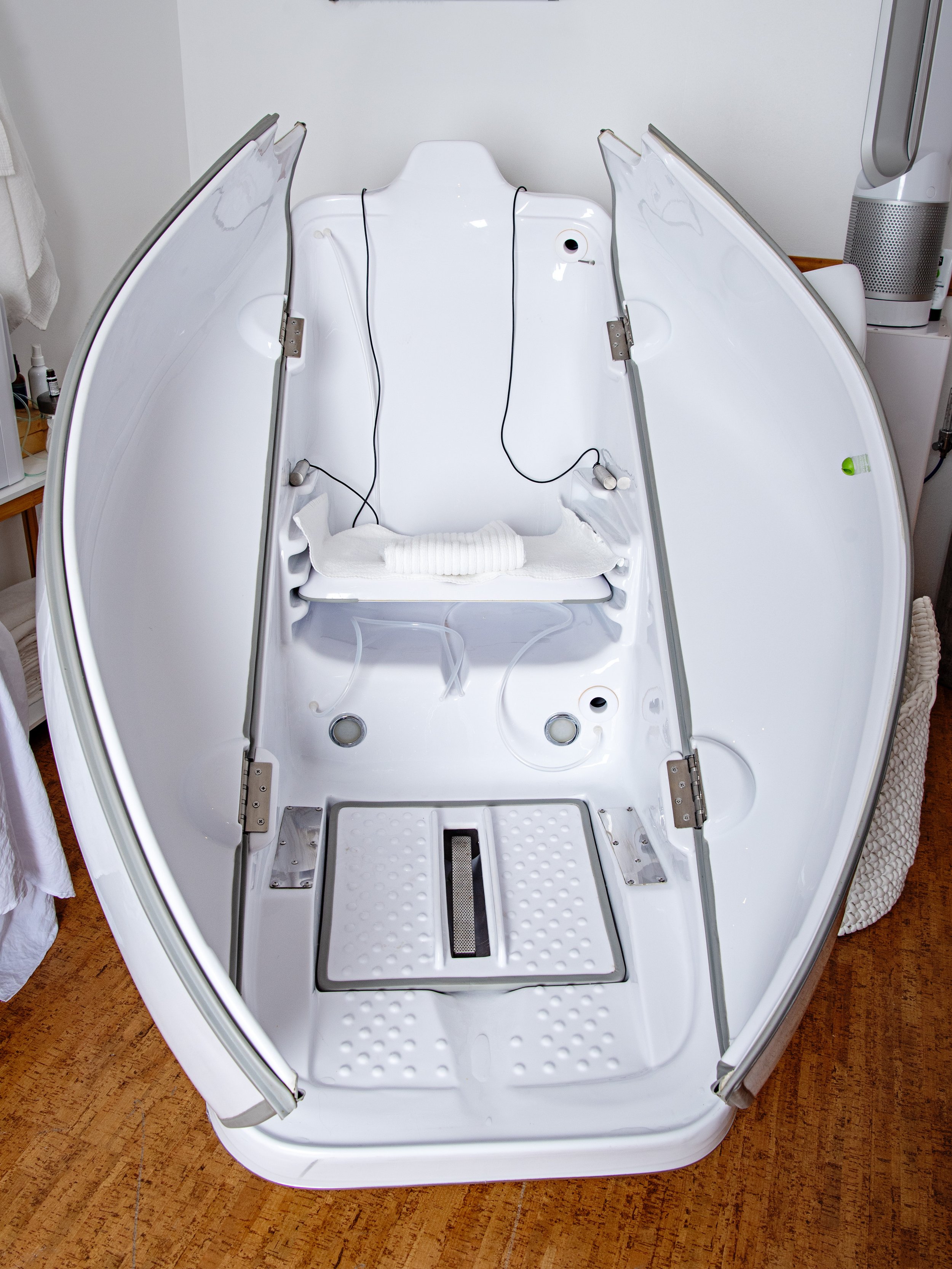
What to Expect
Experienced, Dedicated and Attentive Care
NEVER USE IF THE CLIENT:
Is pregnant or breastfeeding - Safety of PEMFs has not been established in pregnancy, Detoxification may result in a higher level of circulating toxins within the body, which can be passed on to babies through breast milk.
Suffers from epilepsy and/or seizures - If a client has epilepsy, whether they are on. medication for it or not, or if they have had seizures in the past, they must not use High-Intensity PEMFs.
Has electrical implants, e.g. pacemaker, cochlear implants, intrathecal pump, insulin pump, etc. - High-intensity PEMF's can shut-off or damage electronic devices, including electrical implants.
Has elevated blood alcohol or drug levels - High-intensity PEMF devices that utilize a spark-gap may induce temporary electroporation. Electroporation is an electric field-induced increase in the permeability of the cell membrane, which allows for enhanced transportation of nutrients and waste across the cell membrane. This helps the cells to detox (get more waste out) and allow more nutrients in. However, one would not want an increased absorption of drugs or alcohol. Therefore, clients who have elevated blood alcohol or drug levels must NOT use High-intensity PEMFs.
Is an organ transplant patient, i.e. taking immune suppression medications - PEMFs are contraindicated in organ transplant patients who are on immune suppression medication. You do not want to risk adversely affecting the immune suppression/rejection process. There is a chance that PEMFs may actually stimulate or activate a more aggressive rejection process.
The chest area. if the client has breast implants. - It is not recommended to use High-intensityPEMFs over the chest area of clients with breast implants, as there is a risk of agitating the synthetic materials and a risk of leakage. On the other hand, breast implants are often associated with significant inflammation with adhesion formation. In that case, PEMFs could be quite helpful, but it is best to avoid prolonged exposures. If a client would like to go ahead with a session anyway, it is at their own risk, and they should use the lowest possible intensity setting, for a MAXIMUM of 3-minutes per area, with a MAXIMUM of 12-minutes total (e.g. 3-mins / area on the ankle, knee, hand = 9 mins total).
Implanted metals, e.g. pins, plates, screws, joint replacements, mechanical heart valves, metal stents, or staples in blood vessels, etc. - High-Intenstiy PEMFs, should NEVER be used over areas with implanted metals if the metal has the potential to be magnetised. If the implanted metal is non-ferromagnetic (most modern implants are non-ferromagnetic and are considered safe for people to pass through MRI scanners), then there should not be a problem. However, it is advisable that you still proceed with caution. If a client with any implanted metal would like to go ahead with a session anyway, it is at their own risk, and they must use the LOWEST possible intensity setting, for a MAXIMUM of 3-minutes (for a full-body session). Instead of a full-body session, these clients benefit from using the other Applicators (e.g. the loops) at higher intensity settings over specific problem areas, so long as it is not use directly over the area with the metal implants. Limit these focused sessions to 3-minutes per area, with a MAXIMUM of 12-minutes total (e.g. 3-mins / area on the ankle, knee, hand = 9 mins total).
Heart conditions & elderly clients - Clients with heart conditions, as well as elderly clients, should consult their cardiologist about using a PEMF device before doing a session. They need an EKG (not older than 12 months) and tey need to be CLEARED by their cardiologist before having a session.